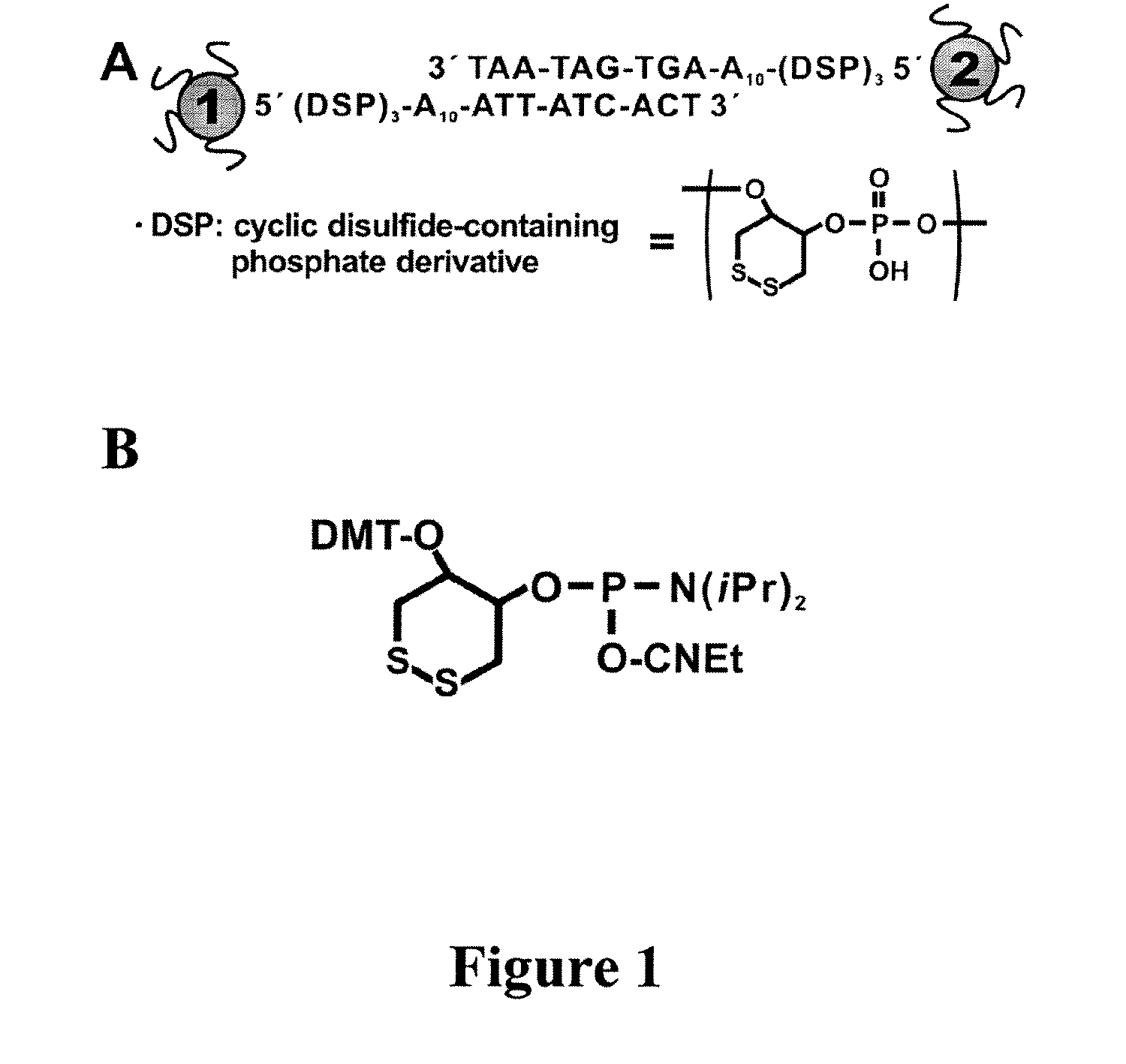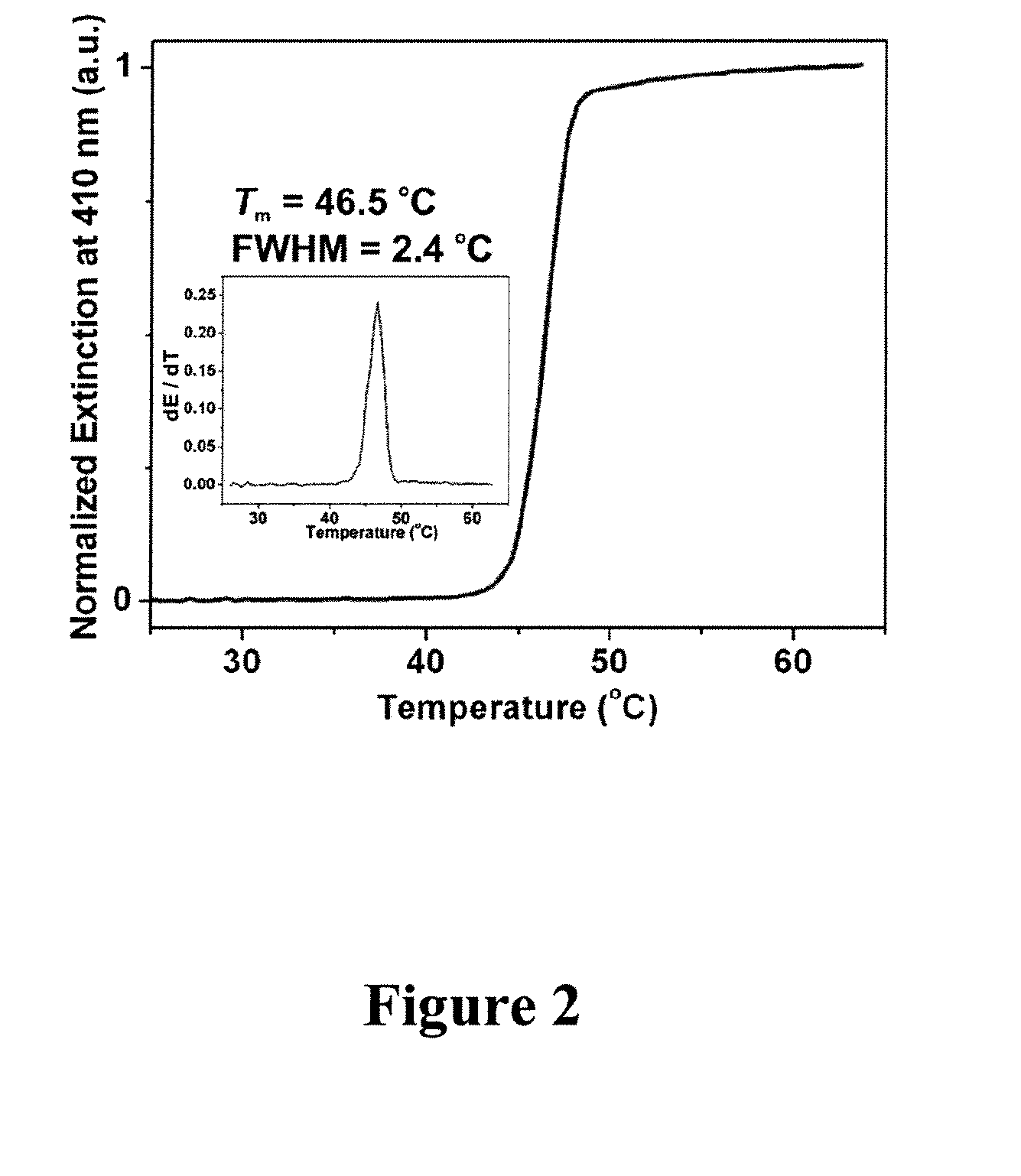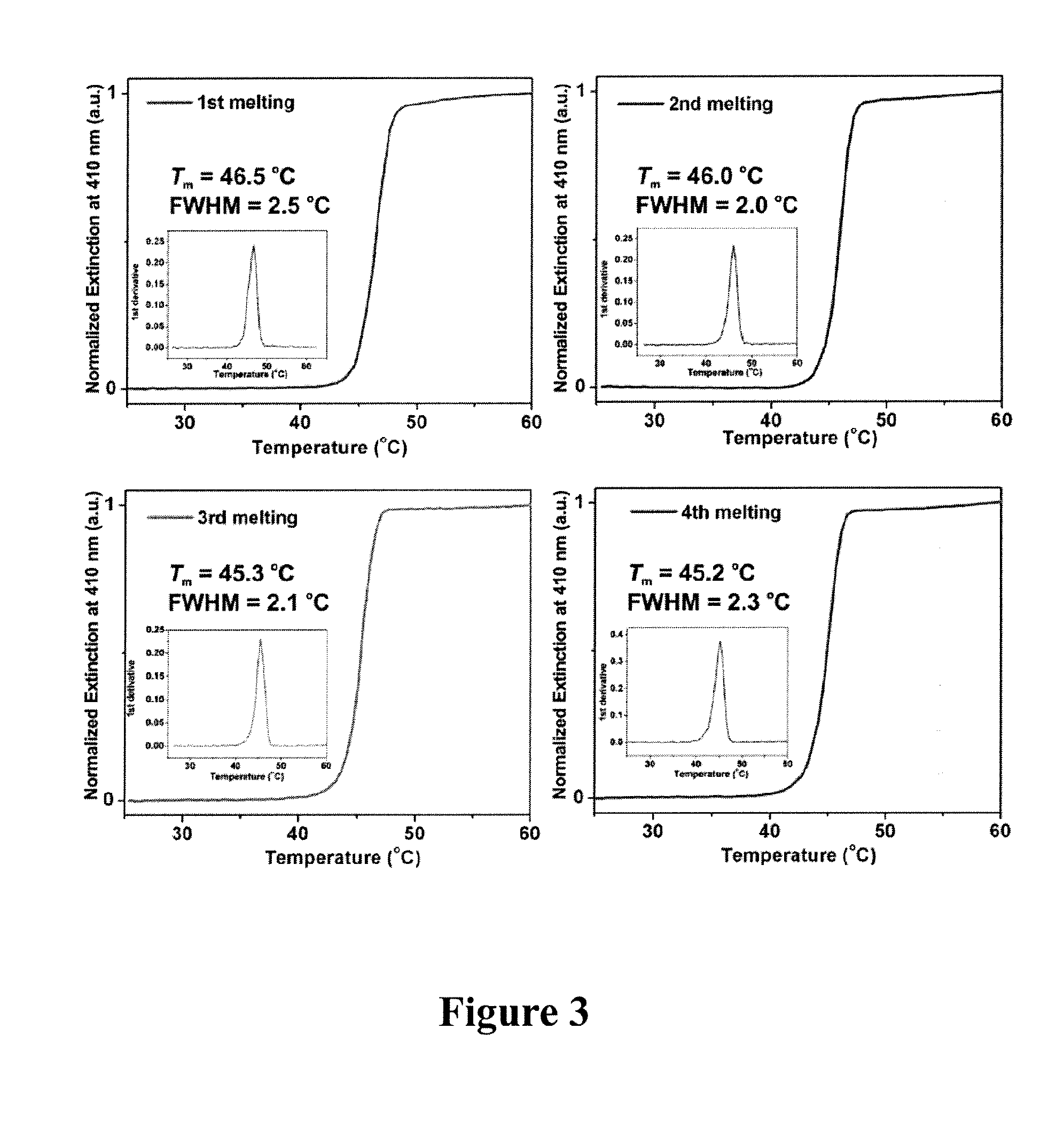Silver nanoparticle binding agent conjugates based on moieties with triple cyclic disulfide anchoring groups
a technology of cyclic disulfide and conjugate, which is applied in the field of silver nanoparticle binding agent conjugate based on triple cyclic disulfide anchoring group moieties, can solve the problems of long synthetic procedures, inability to use oligonucleotides to stabilize particles, and require additional cumbersome chemical modification steps, so as to achieve a sharp melting profile and higher stability
- Summary
- Abstract
- Description
- Claims
- Application Information
AI Technical Summary
Benefits of technology
Problems solved by technology
Method used
Image
Examples
example 1
[0104]One OD of an oligonucleotide modified with three cyclic disulfide units (1: 5′ (DSP)3-A10-ATT-ATC-ACT 3′ (SEQ ID NO. 1); 2: 5′ (DSP)3-A10-AGT-GAT-AAT 3′ (SEQ ID NO. 2); DSP: cyclic disulfide-containing phosphate derivative; see FIG. 1A) was added to 1 mL of Ag NP (30 nm in diameter, 1.2 nM) solution. Silver nanoparticles were purchased from Ted Pella. The oligonucleotides were prepared through solid-phase syntheses on 1 μmol scales using controlled pore glass beads (CPG) and standard phosphoramidite chemistry on an automated synthesizer (Milligene Expedite). For the 5′ terminal modification of oligonucleotides with cyclic disulfide anchors, three disulfide-containing phosphoramidite units (DTPA; Glen Research, Cat. No. 10-1937-90, FIG. 1B) were coupled in a series on the synthesizer with an extended coupling time (10 min) each. DTPA becomes DSP through the synthesis cycles. The synthesized oligonucleotides were cleaved from the CPG support by incubation in 1.5 mL of NH4OH (30%...
example 2
[0108]The reversible nature of the DNA-Ag NP hybridization process was further characterized by monitoring the melting process at 410 nm as a function of temperature (FIG. 2). Importantly, the DNA-linked Ag NPs exhibit a sharp melting transition similar to that characteristic of the analogous DNA-linked Au NP aggregates (Jin et al., J. Am. Chem. Soc. 2003, 125, 1643-1654), indicating that DNA-linked Ag NPs also exhibit highly cooperative binding properties. The melting temperature (Tm) of the DNA-linked Ag NPs, 46.5° C., was obtained by taking the maximum of the first derivative of the melting profile. The FWHM of the first derivative (FIG. 2, inset) is ˜2.4° C., which is comparable to the typical sharp melting transition of DNA-linked Au NPs (FWHM=˜2.2° C.) (Storhoff et al., J. Am. Chem. Soc. 1998, 120, 1959-1964). Significantly, this melting transition was found to be highly reproducible, as demonstrated by repeated hybridization / melting experiments, which were performed with the ...
example 3
[0110]To determine the effect of the salt concentration on the melting properties of DNA-Ag NP aggregates, the melting transitions of DNA-Ag NP aggregates as a function of NaCl concentration was monitored. As expected, the melting transitions occur at higher temperatures as the salt concentration increases (FIG. 4A) due to enhanced screening, which decreases the repulsion between the negatively charged oligonucleotides, as previously reported with DNA-Au NPs (Jin et al., J. Am. Chem. Soc. 2003, 125, 1643-1654). The Tm spans the range from 46.5° C. to 58.8° C., as the salt concentration is increased from 0.15 M to 0.70 M (FIG. 4B). Note that the functionalized Ag NPs are stable at high salt concentrations (up to 1.0 M NaCl). Importantly, all of the melting transitions are extremely sharp over the entire salt concentration range studied (FWHM≦˜2.5° C.). This observation demonstrates that the DNA-Ag NP hybridization and dehybridization process can be controlled by adjusting salt concen...
PUM
| Property | Measurement | Unit |
|---|---|---|
| Diameter | aaaaa | aaaaa |
| Diameter | aaaaa | aaaaa |
| Stability | aaaaa | aaaaa |
Abstract
Description
Claims
Application Information
 Login to View More
Login to View More - R&D
- Intellectual Property
- Life Sciences
- Materials
- Tech Scout
- Unparalleled Data Quality
- Higher Quality Content
- 60% Fewer Hallucinations
Browse by: Latest US Patents, China's latest patents, Technical Efficacy Thesaurus, Application Domain, Technology Topic, Popular Technical Reports.
© 2025 PatSnap. All rights reserved.Legal|Privacy policy|Modern Slavery Act Transparency Statement|Sitemap|About US| Contact US: help@patsnap.com



